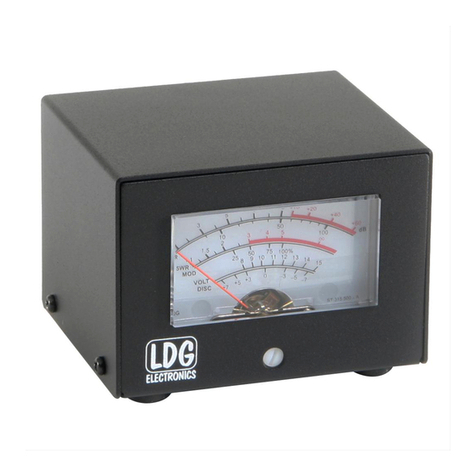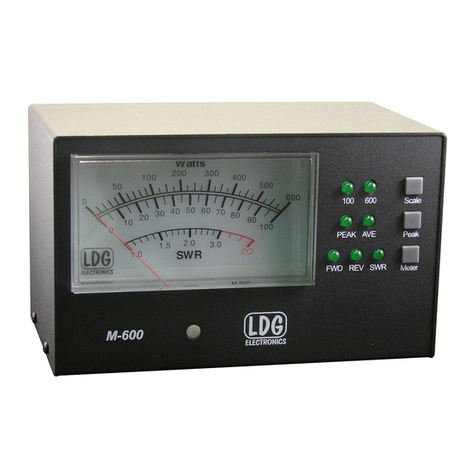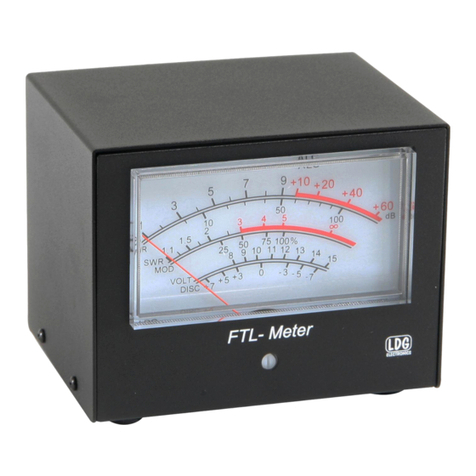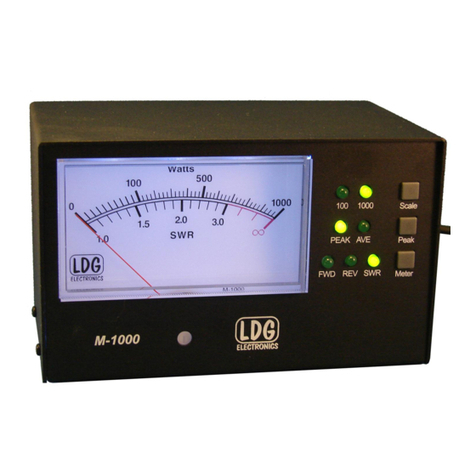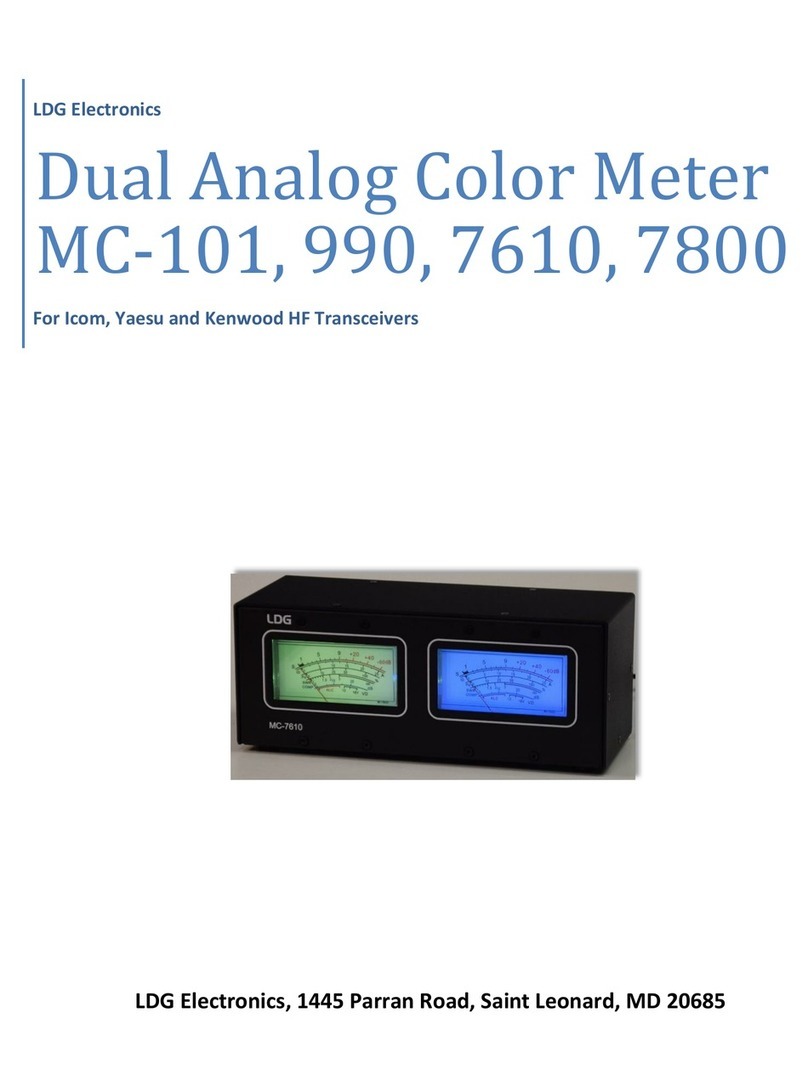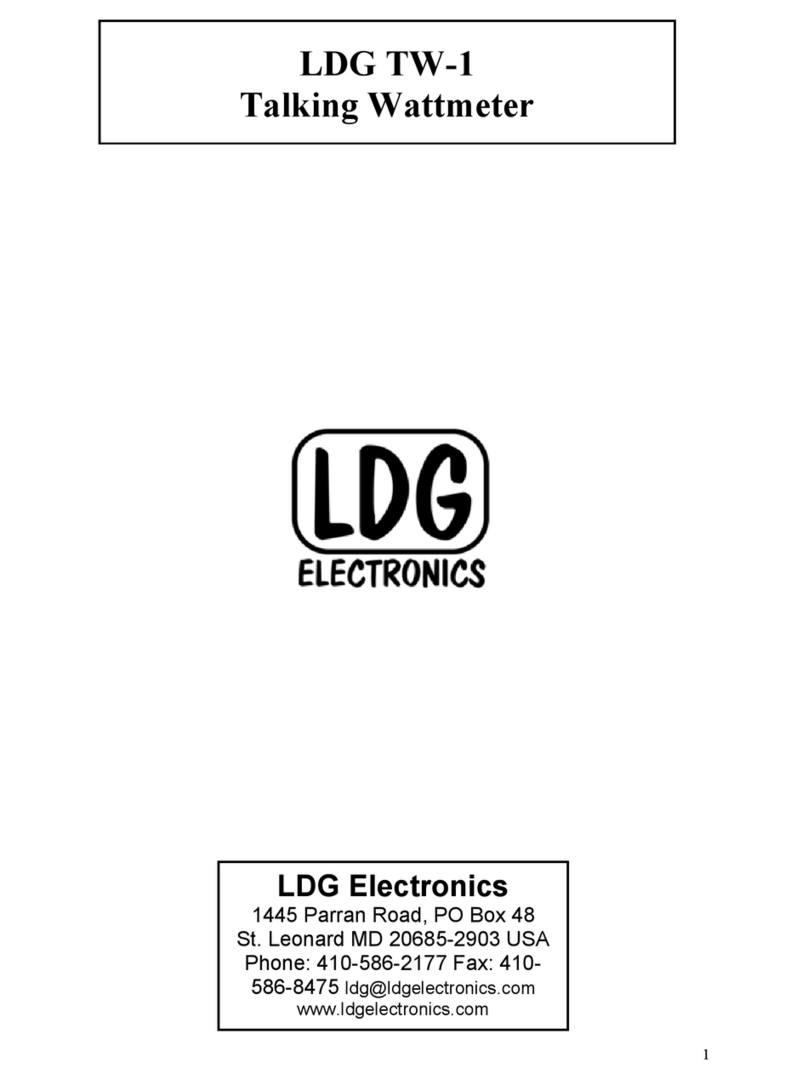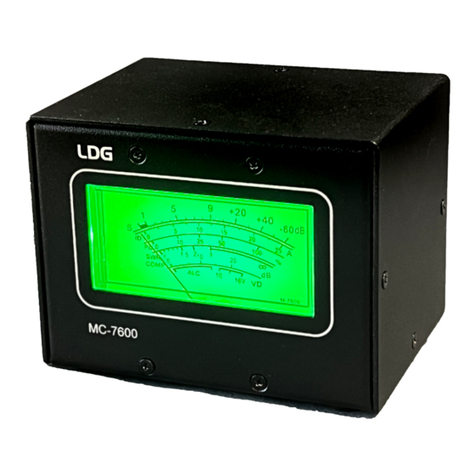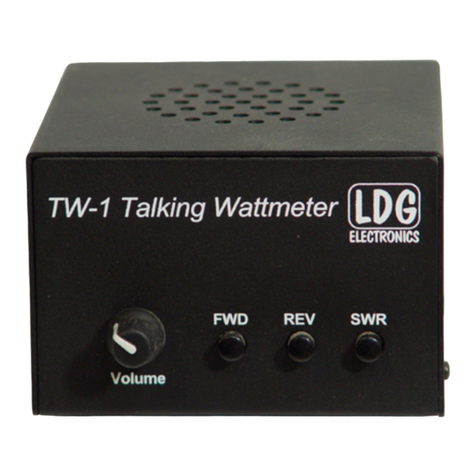
PAGE 7
SETUP
Icom included two menu items in the setup menu system of the IC-7700 transceiver, to allow
configuring an external meter such as the M-7700.
Initial Calibration
As shipped from the factory, the M-7700 is calibrated, but may require some adjustment due to
shipping or other factors. When the radio is off, the needle on the M-7700 should rest at the “1:1” line
on the SWR scale. If it does not, insert a flat blade screwdriver into the plastic screw under the meter
face on the front panel of the M-7700. Gently turn the screw in either direction until the needle rests on
1:1.
With the radio on, press the EXIT/SET button on the front of the transceiver several times to get to
the top of the menu system. Next, press the F7 (SET) soft button at the bottom of the screen. The main
settings screen should now be visible.
Next, press the F2 (ACC) soft button. Using the F1 (down) and F2 (up) soft buttons, scroll down
until the External Meter Output item is selected. Rotate the main dial knob until VD is selected. This
displays the output drive transistor voltage, which should be constant at 48 volts.
Press the F1 (down) button one more time to select External Meter Level, and rotate the main dial
knob clockwise until the level is at 100 percent.
Repeatedly press the soft button that is second from the top on the left side of the IC-7700 main
screen (METER) until something other than VDis displayed on the built-in “virtual” meter. The M-
7700 meter should now be showing near 48V on its VDscale.
When the External Meter Output menu selection is set to V
D, and the internal meter is not
displaying VD, the M-7700 should indicate 48VDC. If not, insert a flat blade screwdriver into the hole
in the rear of the M-7700 marked FS, and gently rotate the potentiometer until the VDscale on the M-
7700 reads exactly 48V. 48V is the tick mark in the center of the 44 to 52V VDscale.
The meter is now calibrated, and further calibration should not be necessary.












